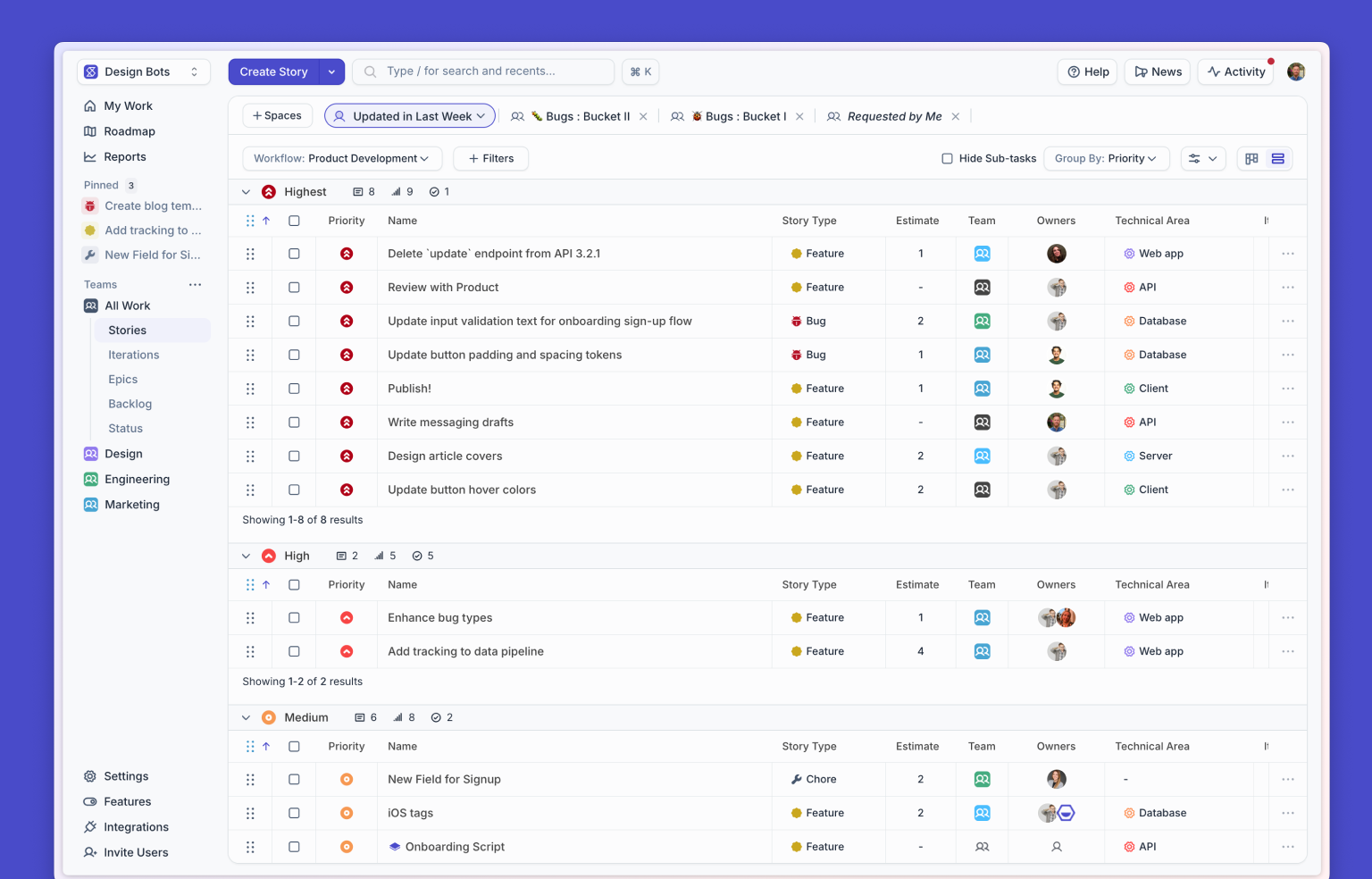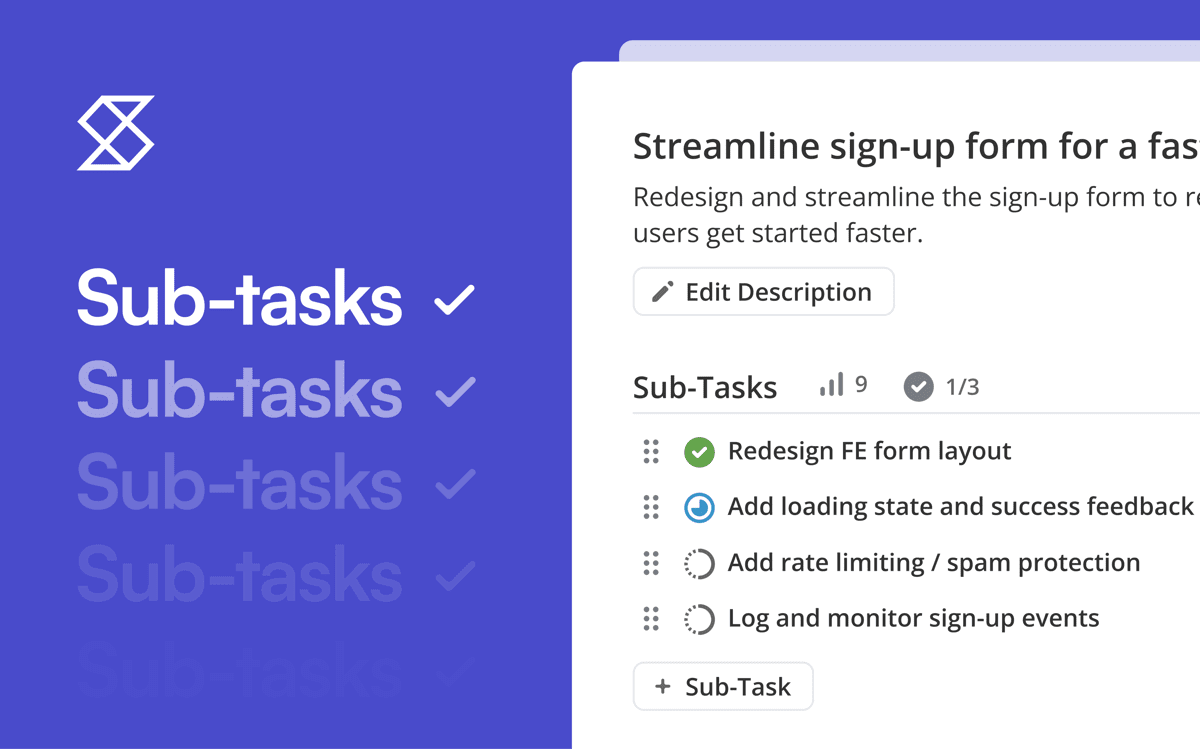Thanksgiving has come and gone. We know this. Turkey, stuffing, mashed potatoes, and gravy are so last week. But here at Shortcut, we thank each other for a job well done year round, even in the beginning of December, when Thanksgiving is but a distant memory.
Distributed teams, asynchronous work, and remote routines make it generally impossible to just walk down a carpeted hall, stand in someone’s doorway, and interrupt their concentration to thank them. Rare is the opportunity to tap someone on the shoulder and say, “Hey, shout out for moderating that amazing webinar you weren’t even prepared for, because you were just filling in last minute, but you nailed it,” or “Hey, I noticed that you noticed that thing and then fixed that thing without anyone noticing.”
Studies show that 9 out of 10 people wish they heard "thank you" in their daily interactions. Of course they do. That whole “we have an unspoken understanding” thing? Total myth.
Demonstrating authentic appreciation in the ways most meaningful to the recipient causes many positive results to occur: better relationships, better employee engagement, and higher satisfaction - for your company and your customers.
So, now that we are living in (almost) 2022, and a great many of us are remote-right-now and/ or remote-forever, what’s the best way to show this thing we call gratitude?
For this special blog iteration, Shortcut’s very own Mike Long, Director of Design, Christine Sanderson-Movius, Software Engineer, and Dana Calderone, Growth Product Manager participated in a roundtable discussion on how to best make their coworkers feel valued, appreciated, and thanked - all year round and beyond.
Q: Why is it important to thank your coworkers, especially in a remote-first setting?
Dana (Product): In a remote setting with less non-verbal communication, there are fewer opportunities to build trust. Therefore, it’s harder to know your coworkers’ communication styles. For example, you may think you’re expressing gratitude, but someone who doesn’t know your communication style may not know that. It’s also harder to maintain a level of community energy and excitement. Praise helps with all of this!
Mike (Design): Thanking someone is an essential component of recognition. Recognition can be a transformative tactic for building an inclusive environment in an all-remote workplace.
Christine (Engineering): Remote work involves an increased amount of asynchronous communication and collaboration. When you’re not working side by side, it’s even more important to recognize someone’s contributions and thank them accordingly. Remote work can be isolating at times, and sharing appreciation for your team is an effective way to build connection and mutual trust.
Q. What is the most important thing to consider when thanking a coworker?
Christine (Engineering): Be specific in your gratitude: point out the unique contributions of your teammate and why you’re appreciative of them. Appreciate your teammate’s efforts and time, even if you disagree with the output: sometimes I don’t agree with how a fellow engineer decided to implement a feature or fix a bug. And that’s okay! However, I always ensure that I thank them for the time and effort they spent working on this task before we dive further into a code review.
Dana (Product): Determine the right method of delivering praise: who should know about this coworkers’ great work? Err on the side of letting more people know than fewer. Once you settle on that, it’s helpful to know the person’s preferred communication style (Slack? In person? Public meeting?)
Mike (Design): It’s vital to celebrate efforts that align with your organization’s core values. Avoid thanking people for things like working late or over the weekend, or simply for their level of output (no matter how high it might be). Recognition is an opportunity to let others know behaviors and attitudes we value from each other.
At Shortcut, we have five core values that guide the way we work:
- Treat People Right: We are respectful, thoughtful, and empathetic. We treat people the way we would want to be treated.
- Bring people joy: We go above and beyond to build things that make people happy.
- Take responsibility: We own our work, drive it forward, and don’t make excuses.
- Be transparent: We are open by default to create visibility into our work and progress.
- Move fast: Speed matters. Many decisions and actions are reversible and do not need extensive study. We value calculated risk-taking and learning through experimentation.
Q. How do you settle on the best way of thanking a coworker?
Dana (Product): Public praise! (Unless there’s a reason it needs to be private, i.e. sensitive information). Was it a small thing? Perhaps just a thank you in the slack thread where the relevant thing happened. Was it a big thing? Shout it out!
Christine (Engineering): For smaller items, “inline” appreciation in the comments of a code review is good. For larger items at Shortcut, we have a #shout-outs Slack channel. It’s a public forum for praising our team that integrates with Lattice, so you can incorporate these shoutouts in more formal reviews and align them to company values.
Mike (Design): Public recognition is the best form of recognition. However, some people might prefer 1-1 recognition. If they advise you on their preference, be sure to honor this in the future.
Q. What are some tips for thanking coworkers remotely?
Christine (Engineering): Establish a team culture of gratitude: it can feel awkward and unrequited if you’re thanking everyone and getting radio silence in return. When a team has an established culture of gratitude with buy-in from leadership and easy ways for expressing gratitude, it further encourages everyone to express their thanks more often.
Dana (Product): Get giffy! Sometimes a gif can express a greater breadth of sentiments than words can alone. Be specific. Share the thing they did and the context of how it helped you and/or others. Be genuine. Did x help alleviate stress in your day-to-day job? Was x compassionate in the approach to help? Say it!
Mike (Design): If possible, include a link to the content or subject matter you are giving thanks for. For example, a Story in Shortcut or a Pull Request (PR) in Github. Be sure to @-mention the person (or persons) so that they’re alerted. Give thanks promptly. It only takes a few minutes to write a brief message of gratitude!
Thank You For Reading This!
The fact is, an act of gratitude positively affects the grateful person, the one being thanked—but it also inspires a desire to help and creates a connection for people who simply witness the act of gratitude.
If you’d like to work for a place that witnesses and values gratitude and joy, check out our job descriptions.
To learn more about us, sign up for a free trial of Shortcut, and learn firsthand how our project management tool for software teams makes work easier. You’re welcome.

















%20(788%20x%20492%20px)%20(1).png)
.png)

